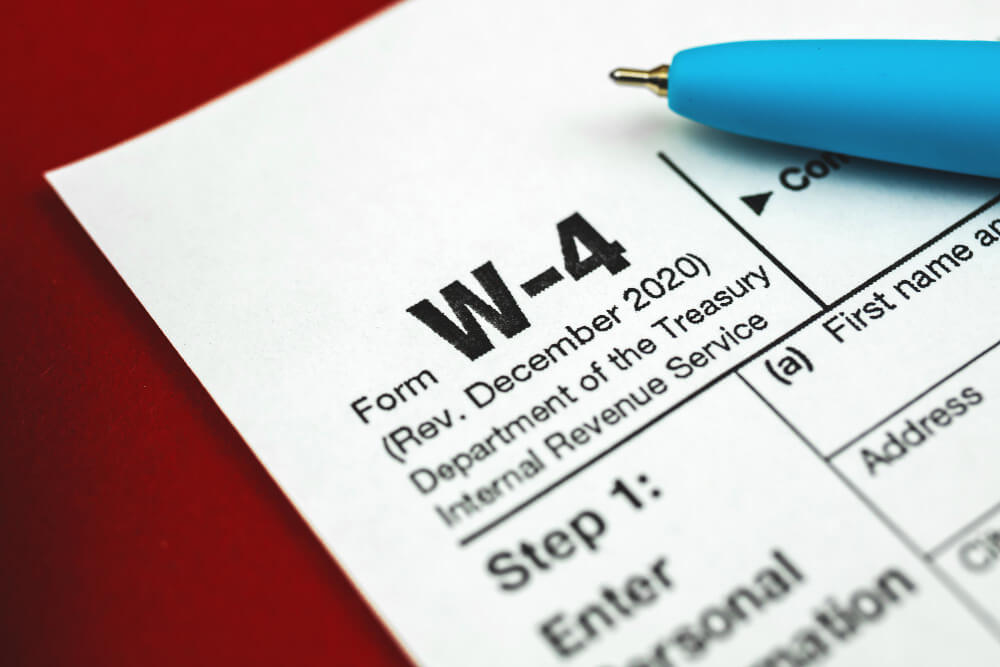Payroll Tax Deferment: Ex-President Trump signed the Executive Order, deferring the Payroll Tax obligations in light of the ongoing COVID-19 pandemic, on August 8, 2020.
The payroll tax deferral policy is designed to offer immediate tax relief to those impacted by the COVID-19 pandemic by automatically suspending the collection of Social Security taxes deducted from workers’ paychecks.
Employers should withhold and reimburse such deferred taxes noticeably — that is, correspondingly over time — from your pay between January 1, 2021, and April 30, 2021, or face interest, fines, and tax additions, according to recent IRS guidelines.
Background of Payroll Tax Deferral
The payroll tax deferral extends to all workers whose fortnightly earnings are less than $4,000 or earn less than around $104,000 a year, and it includes funds that would usually be used for Social Security benefits.
The 12.4 per cent Social Security tax duty is usually split between the employer and the employee, with each paying 6.2 per cent. Employers withhold the employee portion and remit it to the IRS on their behalf as part of the FICA tax deduction.
Employers were provided with the option to postpone withholding the employee part of the Social Security tax until the end of 2020 under the payroll tax deferral. If taxes are postponed, the balance must be repaid in full by April 2021.
IRS Notice 2020-65 clarifies that overall salaries are determined to pay period by pay period, which could disqualify the same employee in some pay periods depending on overtime wages or other bonus pay.
In addition, if an employer pays wages on a schedule other than biweekly, the $4,000 requirement must be recalculated as an equal sum for different pay periods.
The Efficiency of Payroll Tax Deferral
The White House has characterized payroll tax deferral as a means of relief for employees experiencing financial hardship due to the COVID-19 pandemic.
However, several concerns were posed by the business community following the release of the presidential memorandum.
Primarily focused on whether the deferral will be discretionary or obligatory and the procedures for repaying the deferred sums.
Furthermore, many have questioned the feasibility of this move, pointing out that payroll tax deferral would provide workers with a temporary pay increase, only to be followed by a reduction that could decrease their paychecks by almost the same amount as the current increase.
Although the payroll tax deferral policy is not compulsory for private-sector employers, federal workers do not have the opportunity to opt-out.
As the largest employer in the United States, the federal government is forced to withhold its workers’ Social Security taxes to provide immediate relief during the pandemic.
It covers all branches of the military as well as federal government civilian employment.
Three important things that employees must know about the payroll tax deferral are:
1. The employer may not provide the holiday
Employers, if they join, are responsible for withholding and paying employees’ deferred taxes early next year.
Whether it’s due to the extent of the obligation, the IRS’s rapid rollout of guidelines, or the difficulty of communicating the information to staff, certain businesses will opt out of offering the holiday entirely.
2. This is just a hiccup
Any sums that you do not pay from September to December will be deducted from your pay in January, just as all holidays must come to an end.
Employees who participate will also see a 6.2 per cent increase in pay.
However, they will fall early next year as employers pay back the accumulated sums and begin to fund the current payroll tax.
Plan by putting aside any extra cash you get this fall to prepare for a decline in cash flow early next year.
3. Deferred taxes will be withheld in equal amounts in the upcoming year
When the employer recoups the deferral the following year, the balance will be deducted equally from January 1 to April 30, 2021.
On the other hand, employers and payroll companies are also working out what will happen to seasonal staff and employees who quit until the deferral is repaid.
What about Income Taxes?
Since the IRS collects payroll taxes from employers, the tax deferral would not necessitate any changes in how qualifying wage earners file their tax returns.
Any withholding reductions for the fourth quarter of 2020 will be reflected in the Form W-2 employers submit in January 2021, and any additional withholding from January to April 2021 will be reflected in W-2s provided in January 2022.
Neither change will affect the procedures for completing individual tax forms in 2020 or 2021.
Employers’ Payroll Tax Deferral Implications
Although the Presidential Memorandum contains language that suggests possible tax relief, there is no assurance that Congress will pass legislation to forgive the deferred taxes. As a result, employers must decide whether they can bear the costs associated with adopting a payroll tax deferral policy.
Before making this decision, they should consider payroll management issues, communicating potential consequences to staff, and taking any legal action required to protect their interests in the event of future unpaid liabilities.
They should also carefully explore any available opportunities for collecting unpaid amounts from workers who leave their jobs or have decreased their salaries during the repayment period.
Employers who want to allow payroll tax deferral must discuss any adjustments that might be needed within payroll systems and configurations to accommodate the program.
Measures to take
Reasonable measures to take when contemplating employee payroll tax deferral
1. Inform your clients about the contents of the August 8 memorandum and Notice 2020-65.
2. Communicate to employers that the deferral is voluntary, in the sense that the notice postpones the due date for withholding and payment but does not exclude earlier withholding and payment.
Similarly, the IRS delayed the 1040 due date this year until July 15 but did not prohibit earlier filing. Treasury Secretary Mnuchin acknowledged this optional status in a public statement.
3. Consider the costs of implementation, such as reprogramming now and then in January.
4. Consider the consequences of workers leaving before the deferred tax is repaid.
For example, a corporation in financial trouble and on the verge of going out of business may be forced to recover the entire sum deferred by workers who are about to lose their jobs right away. How can employers manage retirements, maternity and paternity breaks, and workplace changes?
5. The notice puts the burden of paying the deferred sums squarely on the employer’s hands.
If the employer fails to pay the deferred sums by April 30, 2021, they will face interest and fines, including the restrictive “trust fund recovery penalty.”
6. Furthermore, the “responsible party” laws allow the IRS to recover unpaid taxes from corporate officials, alliance members, staff, and other individuals who are responsible for handling and depositing withheld taxes.
In bankruptcy, trust fund taxes are not dischargeable.
7. After consulting with liability carriers, each client should decide what is ideal for their situations.
How to Handle the Deferral
If your company implements the deferral, you might want to consider putting some of the extra funds in your paycheck aside to help you offset the temporary pay cut that’s likely to occur after the New Year.
It is unlikely that the president can achieve his goals of eliminating payroll taxes or completely forgiving deferred taxes but find these savings a windfall if he does. Otherwise, they will assist when it is time to repay the deferral.




